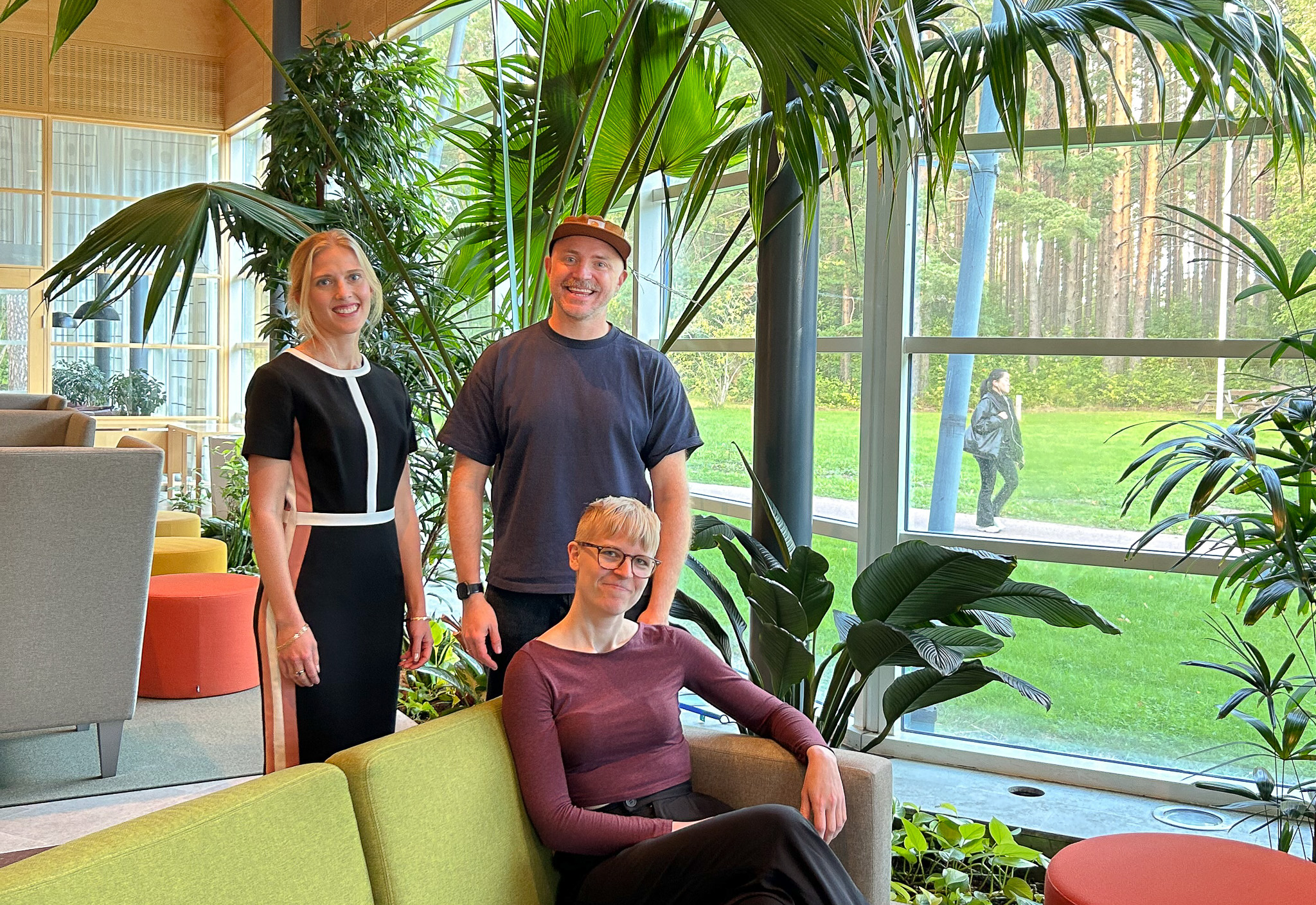The speakers were Siri Jagstedt, Senior Lecturer in Business Administration at Karlstad University, Sara Gandrén, Lawyer at inTechrity and Joacim Lundin, Copywriter and Project Manager at Advant.
Using AI – why and how?
An important question for all employers is why and how to use AI. The use of AI is becoming increasingly complex with the introduction of the AI Regulation, and the experts agreed: start by defining the purpose of AI in your organisation – it will pay off and is a must for many companies.
The AI Regulation – what does it mean?
The AI Regulation, which like the GDPR will become Swedish law, applies to private companies and public organisations using AI with a link to the EU, i.e. if the AI systems are either located in the EU or their use affects people in the EU.
– The regulation will enter into force in stages and in principle everything will apply from 2 August 2026. Anyone who violates the regulation risks penalties of up to 7% of turnover, says Sara Gandrén.
Sara suggests three steps to prepare:
- Map – Start mapping how you use AI.
- Assess – Assess whether the use falls into one of the different risk categories on which the regulation is built, unacceptable risk, high risk and specific risk.
- Act – If unacceptable risk – stop the use or try to turn it into a high risk. If high risk – determine what requirements you need to fulfil and start compliance work. If specific transparency risk – review how you can fulfil these requirements.
There are other legislations that interact with this one, like the GDPR, and it’s a complicated piece of legislation so get expert help!
Future competences and AI
The rapid development of AI is changing the way we interact with technology and raises questions about which skills will be most important in the future. Siri emphasises that what separates humans from AI today is, among other things, our ability to understand context and empathise – qualities that are crucial in many professions.
– The human-technology partnership is about capitalising on our different strengths. As AI gets better at analysing, it may lead employers to value intuitive intelligence and empathy more than pure analytical skills,” says Siri Jagstedt.
Many people are worried about technology taking over jobs, but Siri instead sees a future where humans and AI work together.
– “Through a collaboration between humans and AI, where we utilise our respective strengths, we can achieve the best results,” Siri explains.
“Are we mainly looking for efficiency, or do we want to build a relationship? Based on that, we can make the best use of our competences and AI.
Becoming an AI enabler – tips for employers
Joacim concluded with a trend spotting on BYOAI – employees using their own AI tools at work.
– BYOAI is a trend that is already shaping many workplaces, often without management being aware of it. “AI can reduce stress and increase creativity, but it also poses safety risks when employees use unsanctioned tools,” explains Joacim Lundin.
According to Microsoft and LinkedIn’s 2024 Work Trend Index, 78% bring AI to work and 85% do so without asking their employer.
To capitalise on AI’s potential and ensure responsible use, Joacim offers employers the following tips:
- Be curious! Explore how AI can improve your business.
- Create guidelines/strategy/policy. Set clear rules on how AI can be used.
- Build test and pilot groups. Test new AI solutions on a smaller scale before wide implementation.
- Apply, apply, apply! Be prepared to continuously test and use AI in different parts of the organisation.
- Highlight good examples. Share success stories within the organisation to inspire and build confidence.
- Give space and be generous with knowledge! Encourage learning and knowledge sharing
– The use of technology is also a work environment issue where companies have an important role to play in preventing internal A and B teams in the continued digitalisation, Joacim concludes.
The network meeting was carried out within the framework of the project “Pre-study community for advanced digitalisation” with funding from Region Värmland.



